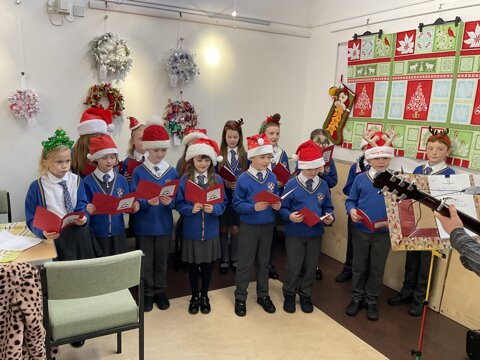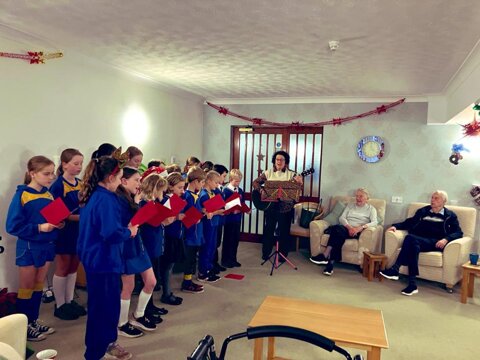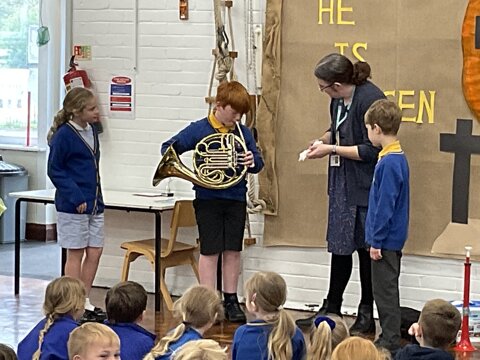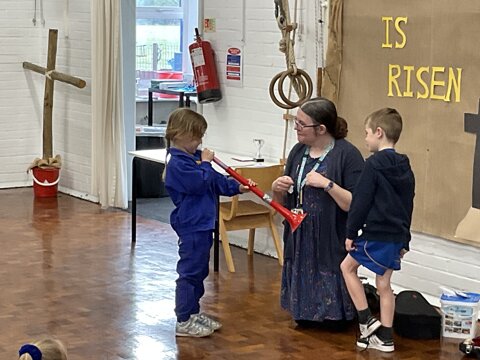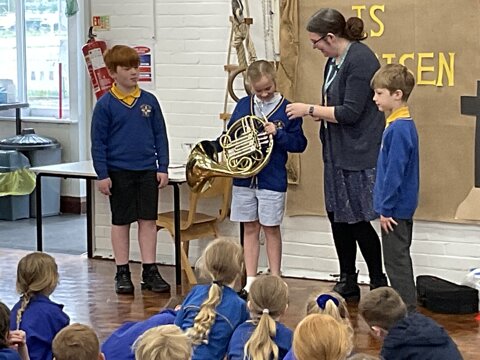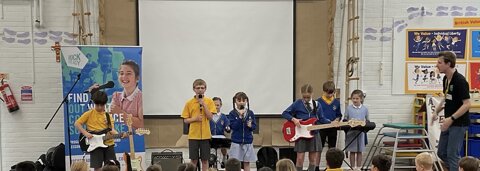Music
“Music gives a sound to the universe, wings to the mind, flight to the imagination and life to everything.”
Plato
At St Peter’s we aim to inspire a love of music that not only develops a subject-specific skills, but also challenges children to consider their understanding of history, art, technology and culture. Our curriculum endeavours to expose pupils to the works of great musicians and composers (historical and current), and to develop an appreciation of quality listening and appraising. We are passionate that music belongs to every pupil of every ability. Our musical opportunities – whether it be curriculum time, instrumental lessons, whole-school singing or extra-curricular activities – nurture pupils’ talent and creativity, but most importantly, teaches our children to use their voices, take part and celebrate their unique gifts.
Music
Curriculum Design
Partnered with the online learning platform Charanga, music is delivered weekly throughout the academic year. Lessons follow an established, consistent structure that is practical, interactive and allow children to apply their knowledge and interpretation of all key musical skills: listening, appraising, improvising, composing and performing. Mrs Banks is the subject leader.
Music is embedded, with weekly singing assemblies, peripatetic lessons and whole-class ensemble tuition accessible to all children.
We aim to ensure that all pupils:
- A rapidly widening repertoire which they use to create original, imaginative, fluent and distinctive composing and performance work.
- A musical understanding underpinned by high levels of aural perception, internalisation and knowledge of music, including high or rapidly developing levels of technical expertise.
- Very good awareness and appreciation of different musical traditions and genres.
- An excellent understanding of how musical provenance - the historical, social and cultural origins of music - contributes to the diversity of musical styles.
- The ability to give precise written and verbal explanations, using musical terminology effectively, accurately and appropriately.
- A passion for and commitment to a diverse range of musical activities.
Music Whole School Overview
EYFS Music
EYFS to Key Stage 1 Music
Year 1 Music
Year 2 Music
Year 3 Music
Year 4 Music
.png)
